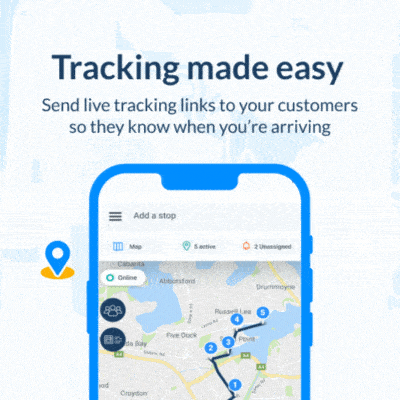If you’re wondering what makes a successful business, then strategic inventory management planning must be mentioned!
Inventory is a business’ largest resource and without proper planning can result in several consequences. These range from increased inventory costs, disrupted production schedules, delays in shipments, large stock-outs, and inability to meet customer expectations.
Inventory planning when done correctly can reduce costs and enhance supply chain efficiency. However, there are several challenges when it comes to inventory planning such as inaccurate data, excess stock, untrained staff, and so on.
Before getting into the nitty gritty, let’s start by delving into what inventory planning is.
What Is Inventory?
Inventory refers to products or raw materials that a business has on-site.
What Is Inventory Planning?
Inventory planning refers to the method of choosing the type of products to supply and how much inventory should be stocked.
Inventory planning involves budgeting and demand forecasting where retailers consider trends and sales figures to decide the most appropriate number to avoid excessive inventory items, as well as when to enable sales and promotions.
Why Is Inventory Planning Important For Businesses?
It’s common that when you first start your operation, fulfilling orders is a manageable process that doesn’t require as much thought or time when it comes to inventory planning.
However, as time goes on and your company experiences significant growth, there is a need to manage, refill, store, and get ready to sell goods.
Considering the levels of inventory are constantly changing within the supply chain, it can be difficult to maintain a specific quantity of inventory that meets consumer demand and yet isn’t overstocked.
Because demand is always changing due to seasonal peaks, economic influences, and what’s going on in the world, it can be tricky for businesses to maintain optimal inventory.
Setting aside time to plan allows you to make better decisions based on inventory trends, the amount of inventory that should be on hand, when to order more stock, and the time it takes for it to be received and assembled for fulfillment.
Additionally, inventory planning can allow you to maintain a considerable amount of safety stock should your business experience an increase in consumer demand.
Safety stock acts as a backup plan so you can carry out your order fulfillment and keep your promise to customers.
Managing your safety stock allows you to continue to meet customer expectations and maintain a positive business reputation.

Inventory Planning Models
There are three different types of inventory planning models:
- Economic Order Quantity (EOQ)
- Inventory Production Quantity
- ABC Analysis
Inventory Planning Methods
There are a number of important steps when it comes to creating an effective inventory plan. Let’s break down the roles into three sections:
- Context
- Analytics
- Planning
Context is the data history of your organization. Sales orders, inventory data, competitors in the industry, what’s occurring in the world and customer knowledge are all important components that should go into inventory planning.
Analytics is exactly what it sounds like, gathering information from data. It’s extremely important that your inventory plan is founded on complete and accurate data that will help form a flexible and solid inventory plan.
Next is the actual planning stage of the following:
- Assembling a broad database of previous sales statistics
- Comprehending the performance of stock-keeping units (SKUs)
- Setting expectations of future seasons by looking at SKU performance
- Assessing competitors within the industry
- Keeping exact receipt budgets by product classification
- Maintaining recurring performance summaries to track performance
- Placing markdowns and sales as influenced by weekly reviews
- Continuous demand forecasting based on trends, seasonal peaks, and present events
- Overlooking financial and product performance at the end of certain periods
Challenges Faced In Inventory And Demand Planning
Inaccurate data
For things to go smoothly within your supply chain, you need to have access to real-time data. Often data is not tracked carefully, even if it’s being monitored manually.
Because this data is distributed throughout various systems, it makes it difficult for retailers to assemble this data together and obtain a proper image of the inventory.
Cycle counts
Annual cycle counts reduce your supply chain’s efficiency as it typically means shutting down processes for a day.
A way to combat this challenge is by frequently doing counts on specific inventory to avoid a lengthy shutdown.
Untrained staff
Having untrained staff will likely see the failure or slowing down of your warehouse operations.
Giving your team members knowledge of the most recent and accurate data, processes, metrics and technologies associated with supply chain management will help them contribute more efficiently to inventory planning.
Inventory with an expiration date
Perishable stock is one of the many challenges faced in inventory and demand planning.
You want to ensure there is enough inventory to meet demands without running out, however, overstocking can be exceedingly costly. Stock due to expire needs to be managed carefully or could end up being wasted.
Lack of automation
Customer expectations have never been higher with regard to their orders being delivered on time. However, being stuck in the process of inventory planning can have a negative impact on the efficiency of your supply chain.
The number of businesses automating their inventory management is significantly increasing. In doing so, they are reducing human error, improving operational efficiency, and saving time that can be used to work on the business.
Multiple Locations
Companies often move inventory from multiple locations, including warehouses and fulfillment centers. Monitoring a number of sources causes difficulty in order fulfillment and inventory planning.
Additionally, carrying out orders from multiple locations increases shipping costs and adds to the frustration of customers waiting for their orders to arrive.
Not having an inventory tracking system makes it challenging to know when to place your stock at all times.
Storing items in the wrong location can increase shipping costs and extend delays for customer order fulfillment.
A poor picking process will decrease operational efficiency and lead to longer travel times across the supply chain.

Advantages Of Inventory Planning
There are several benefits of inventory planning that can help your business combat unpredictable market variations and meet future demand. This includes improved cash flow, preventing excessive stock and stockouts, meeting customer demand, and increase in profit margins.
Improved Cash Flow
Typically company owners will compose methods and policies to ensure production and sales are better managed and controlled.
Such policies are mandatory for all team members and managers and will help the business to handle outdated items, and account for inventory movement.
By investing in a robust inventory planning system, businesses can achieve specific organizational targets, especially when it comes to improved cash flow.
Small businesses have less opportunity when it comes to purchasing large quantities of inventory as a result of limited capital. By having better control of your inventory you can increase cash flow through inventory flow.
By freeing up your capital, you can invest in other aspects of your business.
Better Storage Organisation
Storing inventory effectively requires not just calculated supply settlements but consistent development.
Having plans that are objective-focused can enable you to choose an inventory storage system that accommodates the requirements of your team and products. This includes the size and quantity of inventory and the space available.
Prevents Stockouts & Excessive Stock
As your business grows, it’s important to ensure you order and maintain a suitable quantity of inventory.
Overselling is one of the major challenges businesses face today and can impact your business’s overall performance and customer satisfaction.
It can be difficult to meet customer demand in today’s climate so having a proper inventory planning system will allow you to forecast demand.
That way you can keep track of orders and inventory throughout your sales channels, giving you insight as to when to restock inventory.
You’ll also avoid having too much stock within your premises, preventing unnecessary wastage of perishable items.
Good Inventory Planning Best Practices
Robust inventory planning influences the profitability of any operation, preventing stock-outs so you can maintain production and reduce expenses on final purchases.
Automation technology
Using reliable software that automates your inventory allows you to maintain the appropriate amount of stock without oversupplying.
Having effective inventory planning software provides visibility into current inventory levels and historical data important for demand forecasting.
Roles and responsibilities
Having an inventory planner assists in inspecting trends and provides insight into demand. Normally, inventory planners operate with supplier managers, control stakeholders, contract management leaders, and supply chain analysts.
Policies and processes
Inventory policies allow you to monitor planning procedures and inventory processes.
It’s crucial to detail and report your inventory planning procedures and liaise your policies throughout your operation, most notably within the supply chain.

The Limitations You’ll Face With Inventory Planning
Inventory planning, whilst can encourage performance, isn’t always the solution to immediate profits. Additionally, property inventory planning methods do not substitute for the quality of goods and reliable staff.
As mentioned earlier, if your staff isn’t properly trained then you can expect to see failures or the slowing down of production in your supply chain.
When it comes to the quality of goods you’re selling, if they are not up to industry standards then customers will be less likely to purchase from your organization in the future.
Starting from the basics by having a dependable team and quality inventory can sometimes be more effective than inventory planning.
What Is Inventory Planning Software?
Inventory management software is a solution that automates your inventory management. This software is implemented to make overseeing raw materials and tracking inventory items and inventory levels much easier for businesses.
The way this software operates is by tracking inventory flow from the supplier to the production process and then moving to the customer.
What Is Inventory Optimisation?
Inventory optimization is the practice of stocking the most suitable quantity of inventory to accommodate the demand rate, reduce logistics expenses and prevent typical issues that occur within an inventory system.
Inventory optimization ensures stock control for ecommerce businesses is managed effectively by applying software, techniques, and practices to monitor inventory levels.
Inventory Planning And Logistics
Locate2u is a delivery management software that automates your entire delivery process for a smoother experience.
This solution allows you to meet customer demands by creating efficient routes for faster deliveries. In doing so, you can deliver items in a timely manner, and increase the potential for repeat customers.
Sick of manually planning orders? Locate2u has your back.
Learn more about how Locate2u can help your business by clicking here, or call 1300 163 087 and talk to a team member today!














